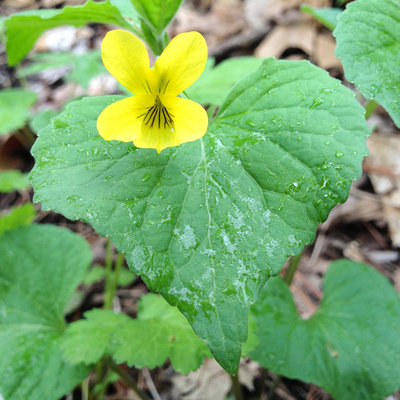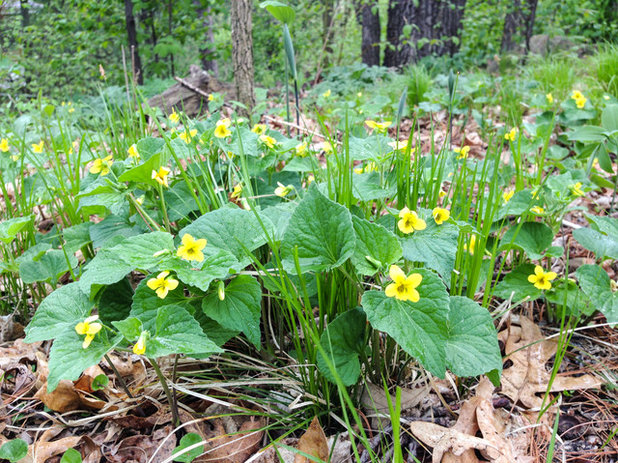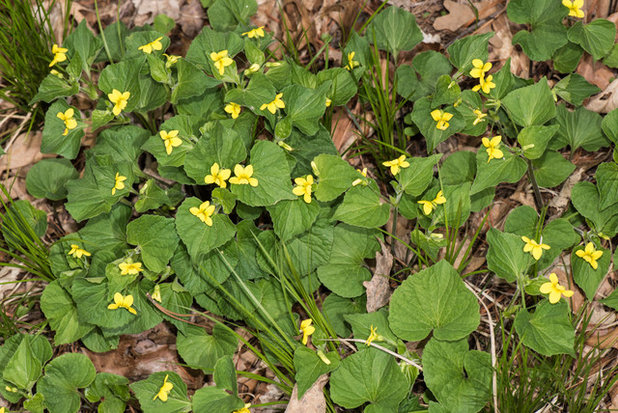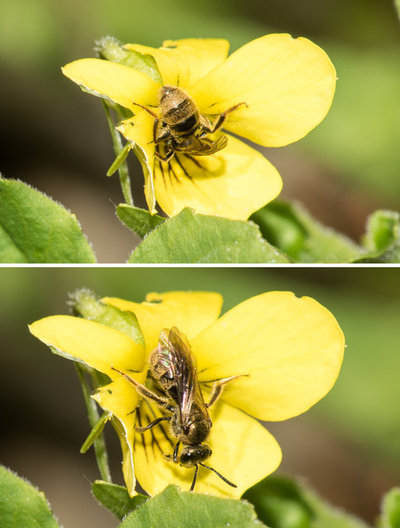Downy yellow violet (
Viola pubescens) is my favorite violet because of its large, heart-shaped leaves and sunny yellow flowers, which provide a unique texture and bright color to the woodland garden in spring. This particular native violet performs well in a variety of situations and soils, and looks spectacular massed along a woodland path, providing a transition between the path and taller woodland wildflowers.
If you have been overlooking violets as a candidate for your woodland or shade garden, it’s time to take a second look and give them a try in that shady spot where you cannot get anything else to grow.

Holm Design & Consulting LLC
Botanical name: Viola pubescensCommon name: Downy yellow violet
Origin: Downy yellow violet occurs in eastern and midwestern North American woodlands, from North Dakota eastward to Maine and southward to Texas in the west and Georgia in the east; in Canada it occurs from Saskatchewan eastward to Nova Scotia.
Where it will grow: Hardy to -45 degrees Fahrenheit (USDA zones 2b to 7b; find your zone)
Typical plant communities: Mesic to dry, deciduous woodlands
Soil requirement: Mesic to medium-dry (mesic-dry), sandy-loam to clay-loam soil
Light requirement: Shade to partial shade
Mature size: 4 to 6 inches tall and 8 inches wide

Holm Design & Consulting LLC
Benefits and tolerances: Tolerates most woodland soils
Seasonal interest: Heart-shaped leaves and bright yellow flowers that open in late April to May
When to plant: Spring or fall; bare-root or potted plants are available from many native-plant nurseries
Distinguishing traits. Downy yellow violet has broad, robust, heart-shaped leaves that remain green throughout the summer after flowering has finished. The bright yellow flowers are held above the leaves and provide a splash of color in the woodland understory.
Shown: Downy yellow violet interplanted with Pennsylvania sedge (
Carex pensylvanica)

Holm Design & Consulting LLC
How to use it. Downy yellow violet can be used in any shady situation along the edge of a planting or interplanted with other short plants, including Virginia waterleaf (
Hydrophyllum virginianum), Pennsylvania sedge (
Carex pensylvanica), trilliums (
Trillium spp), wild ginger (
Asarum canadense) and Dutchman’s breeches (
Dicentra cucullaria). Or use as a ground cover under a tree. Violets can also be naturalized into a lawn in shady areas.
Planting notes. Downy yellow violet spreads by rhizomes and will reseed around the parent plant. A small planting of individual clump-like plants will evolve into a mass of plants. Seedlings or individual plants from a cluster can transplanted after flowering and replanted.
Deer will occasionally browse the foliage but seem to show a preference for other types of native violets, including common blue violet (
Viola sororia), that are likely not as coarse-textured or hairy.

Holm Design & Consulting LLC
Pollinator notes. Violets are an important source of nectar for bee species that emerge in spring, including small carpenter bees (
Ceratina spp) and mining bees (
Andrena spp).
Violet flowers have hidden glands that secrete nectar, called nectaries, that can be hard for a bee with a short tongue to reach. It is not uncommon, therefore, for smaller bees, such as the small sweat bee (
Lasioglossum sp) pictured here, to enter the flower upside down in order to reach the nectaries. Violet flowers typically have nectar guides on the lower petal in the form of stripes that help visually guide a bee to the flower’s nectar.
Violets often flower twice; the initial flowers open and have colorful petals that attract bees. In late spring or summer, the violets begin producing less conspicuous, closed flowers (cleistogamous flowers) that do not open and therefore receive no visits from pollinators. These closed flowers will self-pollinate, ensuring that the plant produces seed.
Region by region:Browse plants native to other regions of the U.S.
See more beneficial bugs you’ll want to invite into your garden





